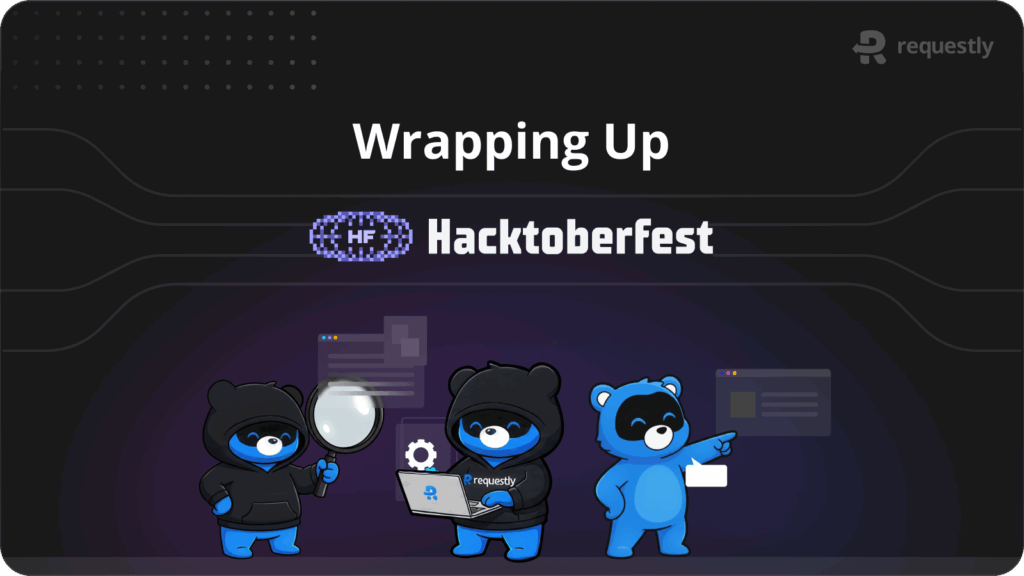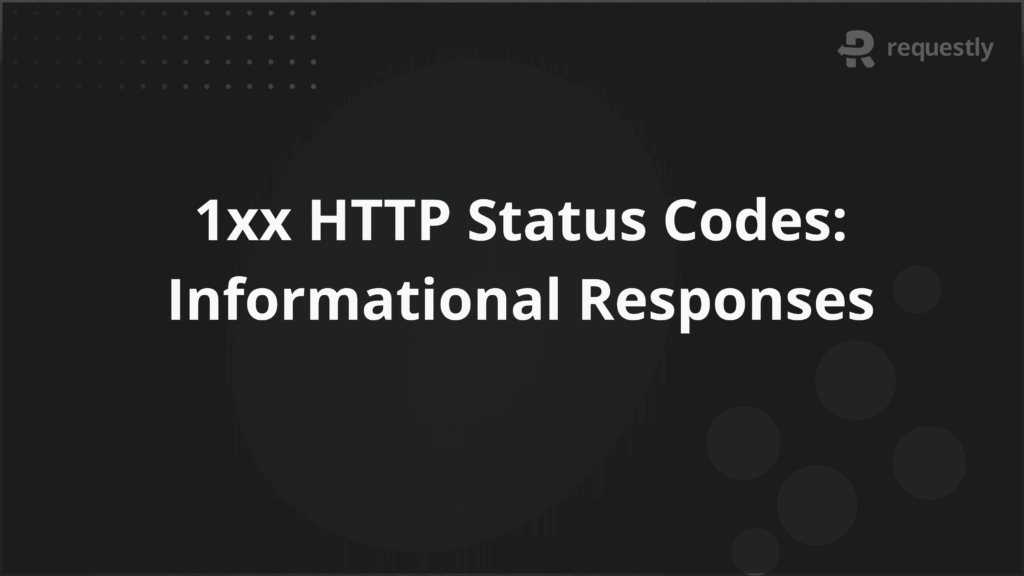Swagger-Based Mock Server: A Beginner’s Tutorial


APIs are critical for connecting different parts of an application, but backend services are often incomplete or unavailable during development and testing.
A Swagger-based mock server addresses this by creating a simulated API environment directly from Swagger (OpenAPI) specifications. This allows teams to validate how their applications interact with the API early on, without waiting for the real backend.
This article explains what Swagger is, how Swagger-based mock servers work, and how to use them effectively to improve development speed and quality.
What is Swagger?
Swagger, now known as the OpenAPI Specification, is a standard format for describing RESTful APIs. It provides a structured way to define API endpoints, request methods, input parameters, response formats, authentication, and other details in a machine-readable JSON or YAML file. This specification serves as a contract between API providers and consumers.
The main benefit of Swagger is that it creates a clear, standardized blueprint of how an API behaves. This blueprint can be used to generate interactive documentation, client SDKs, and, importantly, mock servers. Because the API details are explicitly defined, tools can automate testing, validation, and simulation without ambiguity.
What is a Swagger-Based Mock Server?
A Swagger-based mock server uses the API definition provided by a Swagger/OpenAPI file to simulate the behavior of the actual API. It reads the specification and generates responses that conform to the defined schema and endpoints.
Unlike hardcoded mocks, Swagger-based mock servers handle multiple endpoints and request types dynamically according to the specification. They produce examples or randomized data that match the API response models. They also simulate error responses to test how applications react in different scenarios.
Why Use a Swagger-Based Mock Server?
Swagger-based mock servers provide several strategic advantages that go beyond simple response simulation. These benefits help improve development velocity and software quality:
- Enable Parallel Development: Frontend developers and testers can build and validate features without depending on backend completion. This separation reduces bottlenecks and shortens release cycles by allowing simultaneous progress.
- Improve Test Coverage: Teams can simulate a wide range of scenarios, including edge cases and error conditions. This enables thorough validation of how applications handle unexpected or rare API responses, improving overall resilience.
- Reduce Integration Issues: Since mock responses are generated from the official API contract, the risk of mismatches between frontend and backend implementations decreases. This ensures smoother integration and fewer surprises during system testing.
- Speed Up Feedback Cycles: Early availability of realistic mock APIs allows teams to identify functional and integration defects sooner. Faster feedback reduces costly rework in later stages of development.
- Lower Dependency Risks: Relying on live backend services can cause delays when APIs are unstable or unavailable. Mock servers provide a controlled, reliable environment that isolates teams from such external risks.
How Swagger-Based Mock Servers Work
Swagger-based mock servers function by interpreting the API specification and dynamically generating responses that adhere to the defined contract. Their operation involves multiple detailed steps:
- Read API Specification: The mock server parses the Swagger/OpenAPI file to extract endpoint URLs, supported HTTP methods, required parameters, response status codes, and data schemas. This creates a complete map of the API structure.
- Match Incoming Requests: When a request arrives, the server matches the request path and method against the specification. It also validates request parameters and headers to ensure conformity before generating a response.
- Generate Responses: The server produces responses based on examples provided in the specification or generates valid random data that fits the defined schema. This helps mimic realistic API behavior under different conditions.
- Simulate Conditions: Advanced mock servers allow intentional error generation by returning various HTTP status codes and custom error messages. They can also introduce response delays to simulate latency or handle authentication failures, enabling comprehensive testing.
- Support Dynamic Behavior: Mock servers can interpret query parameters, request bodies, and headers to customize responses dynamically. This allows for scenario-specific behavior, such as returning different data sets based on input values, making tests more realistic and meaningful.
Key Features of Swagger-Based Mock Servers
Swagger-based mock servers offer features designed to closely replicate real API behavior. Understanding these features helps teams choose and configure mock servers effectively:
- Automatic Endpoint Generation: Mock servers automatically create all endpoints defined in the Swagger specification. This eliminates manual setup and ensures the mock environment stays consistent with the API contract as it evolves.
- Schema-Based Response Validation: Responses generated by the mock server adhere strictly to the response schemas defined in the Swagger file. This helps detect inconsistencies early and prevents downstream issues caused by incorrect data formats.
- Dynamic Data Generation: Rather than static responses, advanced mock servers can produce varied, realistic data sets based on schema rules. This supports more thorough testing, including edge cases and volume testing.
- Error Simulation: The ability to simulate different error responses, such as 4xx and 5xx HTTP status codes, allows teams to test how applications handle failures, timeouts, or invalid input scenarios.
- Request-Based Response Customization: Mock servers can customize responses based on request details such as headers, query parameters, or payload content. This enables more complex testing scenarios like conditional workflows or feature toggles.
- Latency Simulation: Introducing artificial delays in responses helps replicate network latency and performance conditions, enabling performance testing and improving robustness under slow or unreliable network conditions.
- Security Testing Support: Some mock servers support authentication simulation and can enforce security rules based on the Swagger definition, allowing early validation of authorization flows and access control.
Dynamic Mocking vs. Static Mocking
Mock servers can operate using static or dynamic responses.
Static mocking returns fixed, predefined data regardless of the request, which is simple but limited in flexibility. Dynamic mocking generates responses based on request details and schema definitions, offering more realistic and varied test scenarios.
Here is a table that highlights the differences between static and dynamic mocking.
Aspect | Static Mocking | Dynamic Mocking |
Response Type | Returns fixed, hardcoded responses | Generates responses on the fly based on the API schema and inputs |
Flexibility | Provides the same response for repeated requests | Produces varied responses depending on request parameters |
Setup Complexity | Easy to create and maintain | Requires a mock server capable of dynamic generation |
Test Coverage | Suitable for basic scenarios only | Supports complex workflows and edge cases |
Maintenance Effort | Needs updates as the API evolves | Adapts automatically to changes in API definitions |
Error Simulation | Can simulate only predefined errors | Can simulate varied errors and unusual cases dynamically |
Use Cases | Early-stage development and simple API endpoints | Comprehensive testing and validation of complex API behavior |
Response Customizations and Error Simulation
Mock servers can do more than return default responses. They allow teams to customize responses and simulate errors to reflect real-world API behavior. This helps developers and testers validate how applications handle unexpected situations and ensures more robust software.
Key capabilities include:
- Conditional Responses: Return different data based on request headers, query parameters, or payload content to simulate real-world variations.
- Error Simulation: Generate HTTP error codes such as 400, 401, 403, 404, or 500 to test how the application reacts to failures or invalid inputs.
- Custom Response Codes: Define specific status codes and messages for testing business logic that depends on unusual API responses.
- Simulate Latency: Introduce artificial delays to mimic network lag or slow backend responses, helping test performance and timeout handling.
- Stateful Behavior: Maintain context across requests to simulate workflows or multi-step processes, such as creating, updating, and retrieving resources.
- Dynamic Data Injection: Modify response data dynamically based on request parameters to test features like filtering, sorting, or calculations.
These capabilities make it possible to test both typical and edge-case scenarios without relying on the live backend.
Troubleshooting Swagger Mock Servers
Even well-configured Swagger mock servers can run into issues during development and testing. Understanding common problems and their solutions helps teams maintain reliable mock environments and avoid delays.
Common troubleshooting areas include:
- Specification Errors: Invalid or incomplete Swagger/OpenAPI definitions can prevent endpoints from being recognized. Validate the specification using online or CLI tools to ensure compliance.
- Incorrect Request Mapping: Requests may fail if the URL, HTTP method, or headers do not match the specification. Confirm that requests conform exactly to the Swagger file.
- Response Schema Mismatches: Generated responses that do not match the schema can break client applications. Review example data and schema definitions to maintain consistency.
- Server Startup Issues: Mock servers may fail to start due to port conflicts or configuration errors. Check logs for errors and verify environment settings.
- Dynamic Data Problems: When using dynamic responses, invalid data generation or missing parameters can cause unexpected results. Test responses against the schema and adjust mock rules as needed.
- Integration Failures: Applications may fail to connect to the mock server due to network or firewall restrictions. Ensure the server is reachable from all relevant environments.
Best Practices for Using Swagger-Based Mock Servers
Effective use of Swagger-based mock servers requires structured practices that ensure reliability, maintainability, and realistic testing. The following practices provide practical guidance for both simple and complex projects:
- Align Mocks Closely with API Design: Always generate mock responses directly from the Swagger/OpenAPI specification. Avoid manual edits that can create inconsistencies. This ensures frontend and backend teams are testing against the same contract.
- Use Context-Aware Dynamic Responses: Leverage request data such as query parameters, headers, or payload content to create conditional responses. This enables testing of workflows and business logic that depend on specific API inputs.
- Simulate Realistic Error Conditions: Go beyond common HTTP error codes. Include edge-case errors, partial failures, and response anomalies that can occur in production. This prepares the application to handle unexpected API behavior robustly.
- Maintain Versioned Mock Definitions: When APIs evolve, keep versioned mock specifications to support older clients and test different API versions simultaneously. This avoids breaking tests when backend changes occur.
- Integrate Mocks into CI/CD Pipelines: Automate mock server startup, schema validation, and test execution in continuous integration workflows. This ensures that tests remain consistent and regressions are detected early.
- Monitor Mock Accuracy: Regularly compare mock responses to the live API. Automated checks or validation scripts can help detect drift between mock behavior and the actual API, reducing integration issues.
- Plan for Stateful Scenarios: For APIs with multi-step workflows, configure the mock server to maintain state across requests when needed. This allows realistic testing of scenarios like authentication flows, resource updates, or sequential operations.
Using Requestly with Swagger-Based Mock Servers
While Swagger-based mock servers provide full API simulation based on specifications, Requestly offers additional capabilities to enhance testing and development workflows. It allows teams to quickly modify or simulate specific API behaviors without changing the backend or the full mock server configuration.
Key ways Requestly can be used alongside Swagger-based mocks:
- Intercept and Redirect Requests: Capture API calls and route them to custom responses. This enables testing specific endpoints or workflows without altering the main mock server.
- Customize Responses Dynamically: Modify response bodies, headers, or status codes on the fly. This helps simulate error conditions, edge cases, or conditional responses for testing.
- Simulate Network Conditions: Introduce latency or delayed responses to mimic real-world network scenarios and validate application performance.
- Quick Setup for Targeted Scenarios: Set up temporary or one-off mocks for new endpoints, experimental features, or urgent test cases without updating the full Swagger mock server.
- Team Collaboration: Share request rules and mock configurations across teams to maintain consistency and reduce setup time.
Conclusion
Swagger-based mock servers are essential tools for testing and development. They allow teams to simulate API behavior accurately, validate workflows, and work independently of backend availability. By supporting dynamic responses, error simulation, and realistic testing scenarios, these servers help improve application quality and reduce integration issues.
Requestly can enhance this workflow by providing additional flexibility. Teams can intercept and modify requests, simulate errors, introduce latency, and quickly set up targeted mock scenarios. Combined with a full Swagger-based mock server, Requestly enables faster development, more thorough testing, and smoother collaboration across teams.

Contents
- What is Swagger?
- What is a Swagger-Based Mock Server?
- Why Use a Swagger-Based Mock Server?
- How Swagger-Based Mock Servers Work
- Key Features of Swagger-Based Mock Servers
- Dynamic Mocking vs. Static Mocking
- Response Customizations and Error Simulation
- Troubleshooting Swagger Mock Servers
- Best Practices for Using Swagger-Based Mock Servers
- Using Requestly with Swagger-Based Mock Servers
- Conclusion
Subscribe for latest updates
Share this article
Related posts





















